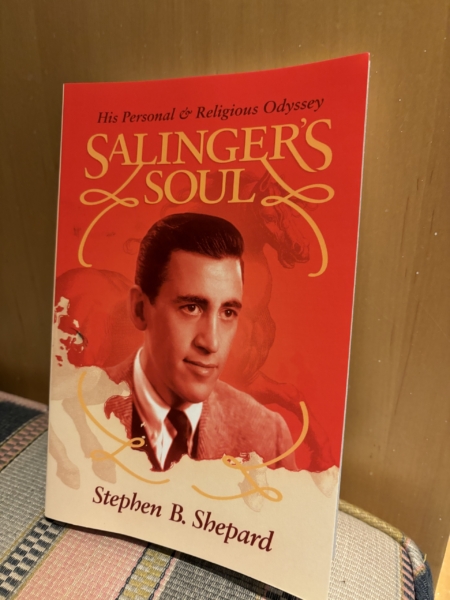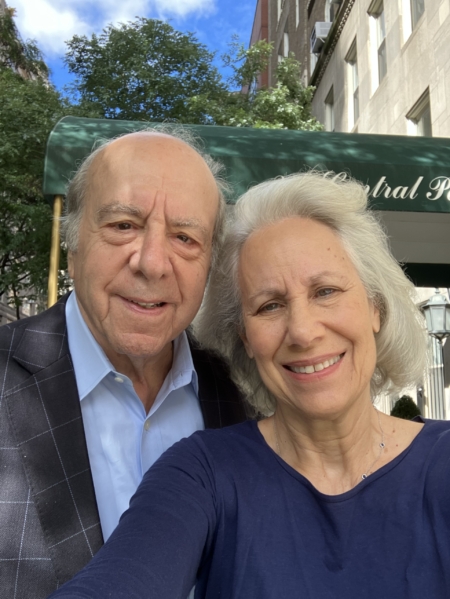
By Michele Willens
Longtime Upper West Sider Stephen B. Shepard has enjoyed a stellar career in journalism. He was the editor of Business Week for 20 years, dean of the CUNY Graduate School of Journalism, and has written several books. He is hoping his new one will garner interest from old and young readers alike.
Yes, he is betting that there are enough folks who still care about a rebellious teen named Holden Caulfield; more specifically, the complicated, controversial author J.D. Salinger, who created Caulfield and has sold 65 million copies (200,000 this year alone) of “Catcher In The Rye,” the novel in which he appears.
“I think it’s mostly because that book is on every high school and college list,” says Shepard. “And Holden talks about conformity and materialism, which obviously still resonate. Also, Salinger’s use of dialogue was extraordinary. He was not great at story, but the ability to do it through the characters’ voices was unmatched.“
Shepard’s book, just published, is called “Salinger’s Soul: His Personal and Religious Odyssey.” It divides the late author’s life into pivotal chapters.
 There was his military service in World War II, which had more of an impact on him than was realized. He landed in Normandy and later participated in liberating a concentration camp. “They called it ‘shell shock’ then, but Salinger clearly lived with PTSD the rest of his life,” says Shepard. “Two thirds of his unit was either killed or injured. It is why he wrote so many damaged characters. He was depressed almost his whole life.”
There was his military service in World War II, which had more of an impact on him than was realized. He landed in Normandy and later participated in liberating a concentration camp. “They called it ‘shell shock’ then, but Salinger clearly lived with PTSD the rest of his life,” says Shepard. “Two thirds of his unit was either killed or injured. It is why he wrote so many damaged characters. He was depressed almost his whole life.”
There was, of course, Salinger’s writing career, which began with short stories in The New Yorker, among other top magazines. (For frustrated writers out there, know that Salinger did not graduate from college and received as many literary rejections as acceptances.)
And then there were his religious beliefs, which surprised Shepard the most. Despite being bar mitzvahed, having a grandfather who was a rabbi, and witnessing Holocaust victims, Salinger eventually adopted a mystical form of Hinduism called Vedanta.
And, yes, there were the women. Salinger was fascinated by and attracted to many who were just this side of legal age. “If you think it’s bad for a 53-year-old to sleep with a 19-year old,” then you won’t likely feel sympathetic,” says Shepard. “Interestingly, Salinger never included sex in his books.” His daughter, Peggy, wrote a vicious memoir about her father. “I get that she was angry, but the world doesn’t need to know it,” Shepard says.
Matt Salinger, on the other hand, is the keeper of their father’s unpublished words. “He would not talk to me,” says Shepard, “though he has been sent the book. He wants to protect his father’s privacy.” Those unpublished words, by the way, will eventually be available to the public. (Many of Salinger’s letters are in the Morgan Library in New York City.)

Salinger himself attended PS 166 and the McBurney School on the Upper West Side, though his parents primarily lived on Park Avenue. Shepard, his latest biographer, and his wife, former magazine editor Lynn Povich, have been in the same apartment on Central Park West and West 92nd Street for more than four decades. Their son and daughter — now grown and both resettled in Los Angeles — attended Trinity School. “Essentially, I’ve lived here all my life, having grown up in the Bronx,” says Shepard. “Have I seen changes? Of course. I lived in a brownstone at one time, and it was a little dicey. It’s much safer obviously, and it’s become homogenized. Both our children walked to school, and they loved it. And we spent countless hours at the Museum of Natural History. Our favorite eatery these days is Bodrum, though there is no shortage of good restaurants.”
Shepard’s most admirable decision was to help create the CUNY School of Journalism on West 40th Street. It offers a graduate-level program for potential journalists who can’t afford Columbia or NYU. “We are fully competitive with Columbia now,” Shepard says proudly. “It is a year-and-a-half program, and all the students get internships. It was a wasteland before we moved into the old Herald Tribune building. This is probably my proudest achievement.”
For now, his hopes lie with those who grew up — and may still grow up — with Holden, Franny, Zooey, and the other characters created by an endlessly fascinating figure.
Michele Willens is the author of “From Mouseketeers to Menopause.”
Subscribe to West Side Rag’s FREE email newsletter here.









Congrats to an UWS’er! Steven, looks like a great book.
It is rather outdated to characterize a CUNY institution as existing for those who “cannot afford Columbia or NYU.” CUNY offers many things that these other institutions do not– in some cases, this includes more prestigious programs that happen to cost less than the vast corporate landowning institutions do.
Yes, you’re right. CUNY programs are regularly as good and often better than those offered at Columbia and NYU. I meant only to say that CUNY’s much-lower tuition is an added benefit — and for many students the only way to earn a degree. Bless CUNY — for its quality and its low cost.
The book and this piece speak to me. I congratulate both writers.
Even Seymour